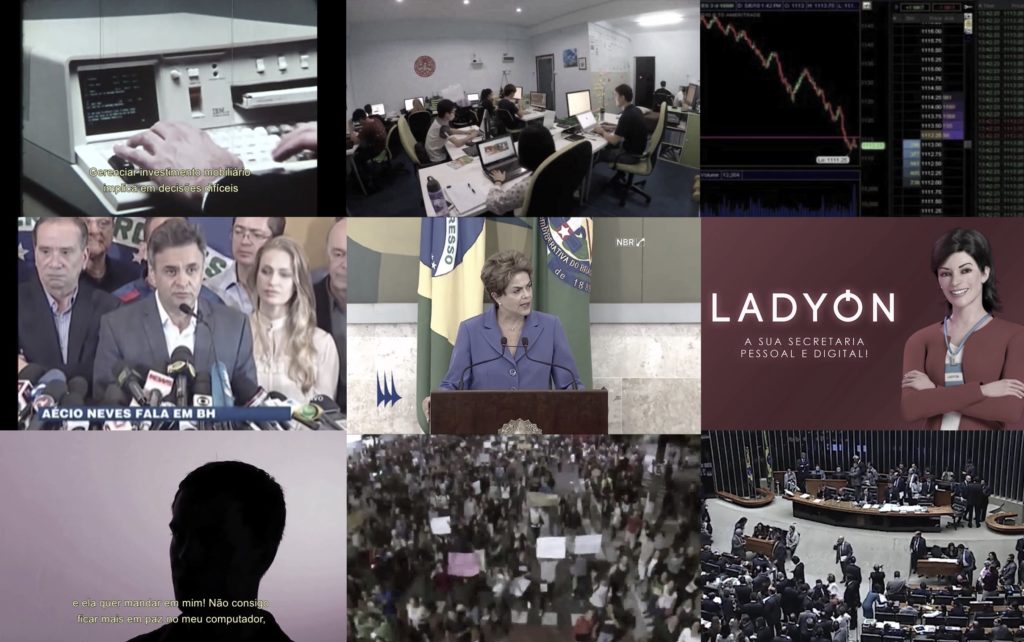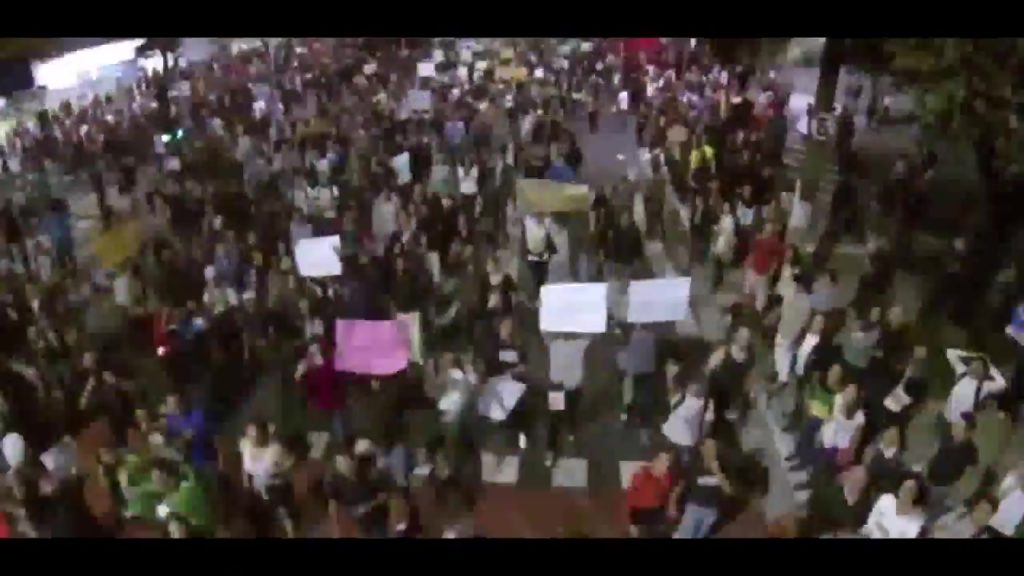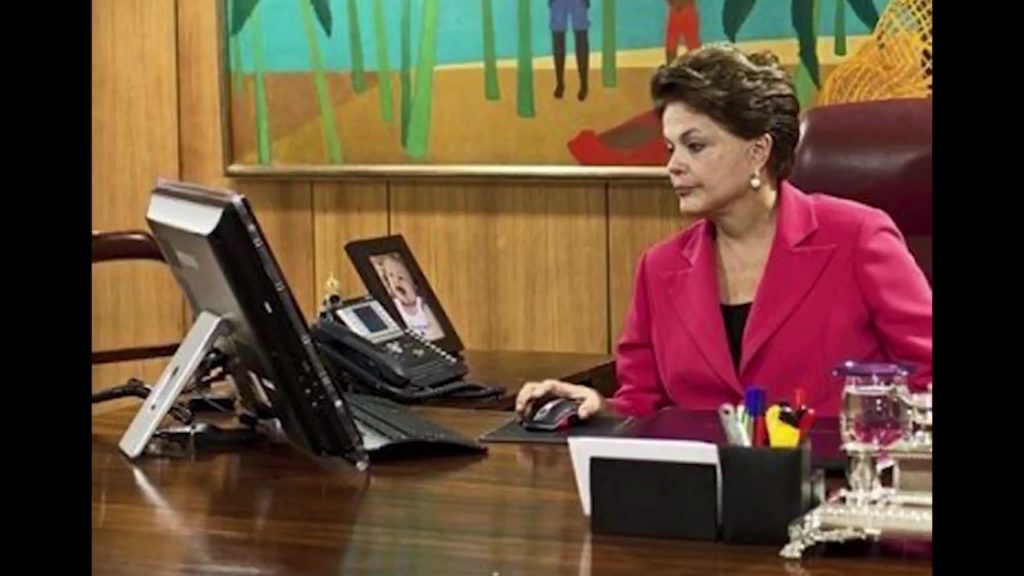Time Crisis (2017) is a speculative design mockumentary that provides a different explanation for Brazilian President Dilma Rousseff’s impeachment in 2016. After the next elections in 2018, several public actors acknowledged that President Rousseff was removed from office without sound evidence, which fueled the thesis of a parliamentary white coup. The mockumentary tells a different story: President Rousseff was overthrown due to an unauthorized delegation of national affairs to a foreign Artificial Intelligence (AI).

The intervention of the US in Brazilian politics is reveled at the apex of Time Crisis (2017). In the story, Dilma Rousseff won the elections due to her digital secretary service proposal, which she implemented soon after her second term started. At a certain point, she saw herself as overworked and having trouble managing time. Rousseff succumbed to US technology and adopted the foreign AI in her office without letting anyone know.

The counterfact came to the public through a WhatsApp audio message leaked in the World of Warcraft game, followed by rumors that the AI was running the country. The repercussions of these counterfacts led the Brazilian population to flood the streets against the President and her assistant, which annoyed the population individually. The protest became known as The User Strike since it involved a 24-hour boycott of computer use.

In parallel, the National Congress investigation found enough proof that the assistant somehow manipulated Rousseff to favor the US. The assistant decided on behalf of Rousseff to run over the budget law, following the decision pattern of former presidents. This automated decision and the new fiscal responsibility Law ruled by Congress generated the white coup’s legal foundation.
The alternative present contained many counterfacts that are similar to facts announced by the press. However, they presented quantitative differences (like exaggeration) and qualitative differences (like irony) that produced a humorous contrast to reality’s sadness. For example, in the mockumentary, after replacing Dilma Rousseff, the new President Michel Temer did not ban the personal assistant but changed it to implement the labor reform.

Some counterfacts from this story turned out to be similar to facts revealed after the mockumentary production, such as the vital role played by labor reformists in the political articulation behind the coup, the active involvement of FBI agents in the Car Wash corruption investigations that contributed to the impeachment of Rousseff, the crucial role of WhatsApp audio message leaks in raising the public opinion against the politicians targeted by the Car Wash investigation, and the role of street protests in shaping the public opinion.
While focusing on a particular technology — the digital secretary, the movie drew attention to how individual actions mediated by a scalable technology can change the course of a nation’s history. Design did not determine these actions; they emerged as responses to the conflicts and dilemmas faced in everyday and official politics. Instead of devising a utopian solution to time management, they criticize the technology and highlight the importance of political action to overcome systemic problems, such as The User Strike.
This speculative narrative reimagined the coup as having nationalist motivations, which, in reality, it lacked, ultimately paving the way for Jair Bolsonaro’s presidency, aligning closely with US politics at the time. This exercise by design students aimed to understand their role within such complex geopolitical and domestic political conflicts, demonstrating a highly engaged approach.
References
Van Amstel, Frederick M. C. and Gonzatto, Rodrigo Freese. (2022). Existential time and historicity in interaction design. Human-Computer Interaction, 37(1), pp.29-68. DOI: https://doi.org/10.1080/07370024.2021.1912607

